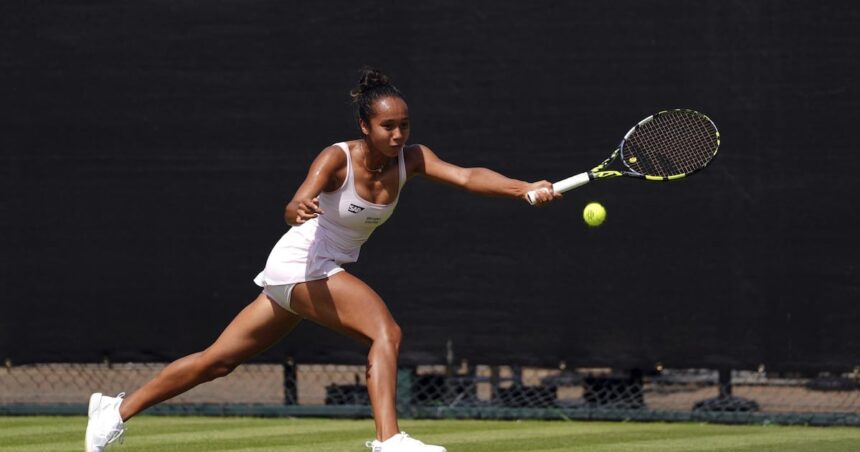In a match that tested both mental fortitude and technical prowess, Canada’s Leylah Fernandez saw her impressive Nottingham Open run come to an end yesterday afternoon, falling to Ukraine’s Dayana Yastremska in a tense quarterfinal showdown that captivated the British crowd.
The 22-year-old Fernandez, who had been showing flashes of the form that once carried her to a US Open final, couldn’t overcome Yastremska’s powerful baseline game, ultimately succumbing 7-5, 6-4 on the pristine grass courts that have historically favored aggressive hitters.
What makes this result particularly poignant is the trajectory both players have followed over the past year. Fernandez, once heralded as Canada’s next tennis superstar alongside Bianca Andreescu, has been working diligently to reclaim her position among the sport’s elite. Her path to the quarterfinals had included convincing victories over established grass-court specialists, suggesting a newfound comfort on a surface that had previously challenged her movement-based game.
Tennis, perhaps more than any other major sport, thrives on these narrative arcs of redemption and rivalry. As I’ve noted in previous analyses for CO24 Culture, individual sports create particularly compelling character studies when athletes face personal crossroads.
Yastremska, for her part, demonstrated why she’s been considered one of the tour’s most dangerous floaters. Her flat, penetrating groundstrokes repeatedly pushed Fernandez behind the baseline, neutralizing the Canadian’s typically crafty court coverage. The statistics tell part of the story – Yastremska struck 28 winners to Fernandez’s 17, while managing to keep her unforced errors nearly even.
“Sometimes in tennis, the margins are impossibly thin,” remarked former British No.1 Tim Henman during the broadcast. “Fernandez had moments where she looked poised to turn this match, but Yastremska’s power on crucial points proved decisive.”
Indeed, what separated these players wasn’t just technical execution but the ability to elevate during pivotal moments. Serving at 5-5 in the first set, Fernandez faced three break points, saving two with courageous net approaches before finally yielding to a blistering cross-court return that caught the line. These swing moments have become central to the evolving trends in women’s tennis, where aggressive risk-taking increasingly trumps consistency.
For Canadian tennis enthusiasts, the result brings mixed emotions. While Fernandez’s quarterfinal showing represents progress on grass ahead of Wimbledon, her inability to convert key opportunities echoes a frustrating pattern in recent tournaments. The Montreal native has now reached five quarterfinals this season without advancing further – a statistic that suggests both encouraging consistency and a concerning ceiling.
“I felt I was right there in both sets,” Fernandez told reporters afterward, her characteristic positivity intact despite evident disappointment. “Credit to Dayana for playing the big points better today. I’ll take some lessons from this match into the rest of the grass season.”
What remains remarkable about Fernandez is her resilience. Since her breakthrough 2021 season, she’s weathered injuries, coaching changes, and the immense pressure that comes with early success. Her ability to maintain competitive relevance speaks to a mental toughness that resonates beyond sports, touching on broader themes of perseverance that we often explore in our CO24 Opinions section.
As the grass court season progresses toward Wimbledon, both players will be worth watching closely. For Yastremska, this victory reinforces her credentials as a potential dark horse at the All England Club, where her power game could trouble even the most established champions. For Fernandez, the challenge becomes translating quarterfinal appearances into deeper runs that could reignite her climb up the rankings.
In the constantly evolving landscape of women’s tennis, where dominance has become increasingly elusive in the post-Serena era, these head-to-head battles take on added significance. They don’t merely determine tournament outcomes; they shape narratives that could define careers for years to come.
Will Fernandez find the missing ingredients to break through her quarterfinal barrier? As Wimbledon approaches, that question looms large for Canadian tennis fans hoping to witness another magical Grand Slam run from their determined compatriot.










